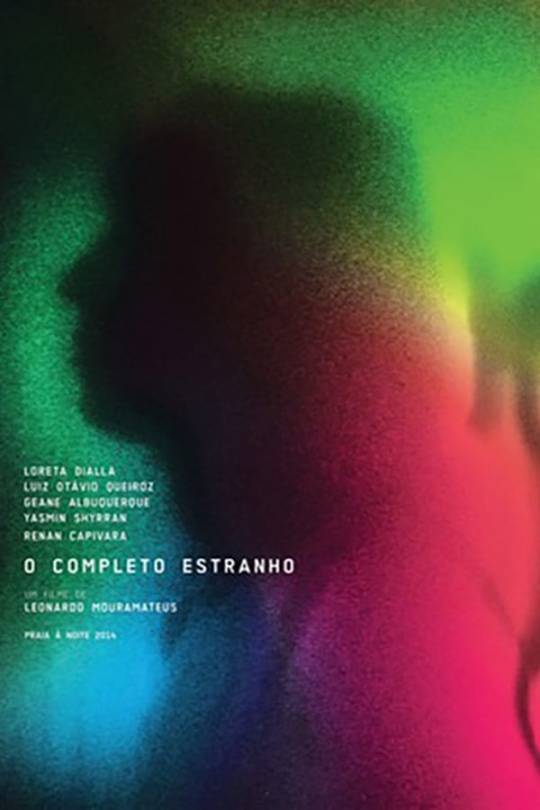#Leonardo Mouramateus
Photo
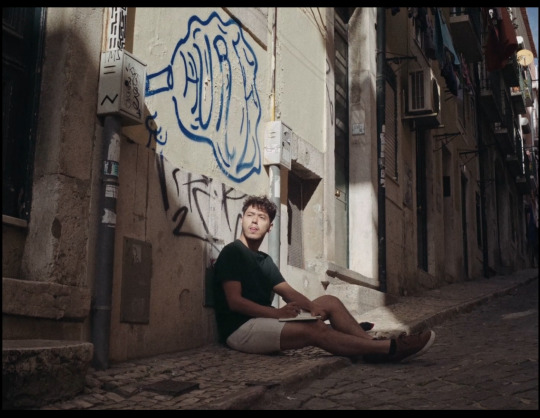
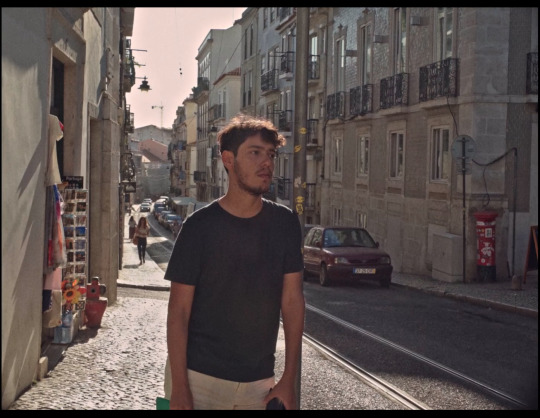
Meio Ano-luz / Half a Light-Year (2021, Leonardo Mouramateus)
5 notes
·
View notes
Photo
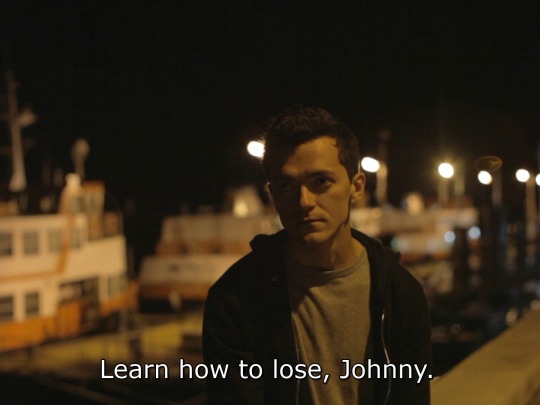

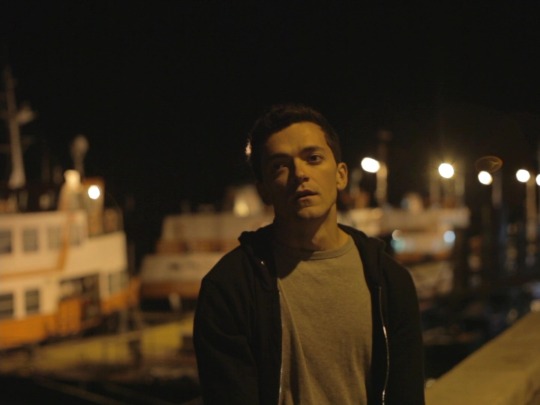

António Um Dois Três [Antonio one two three] (Leonardo Mouramateus - 2017)
#António Um Dois Três#Antonio one two three#2010s cinema#Leonardo Mouramateus#Mauro Soares#Deborah Viegas#Daniel Pizamiglio#João Fiadeiro#cinema of Portugal#Lisboa#Portuguese cinema#Portuguese movies#European movies#European cinema#European society#Lisbona#Lisbon
8 notes
·
View notes
Photo
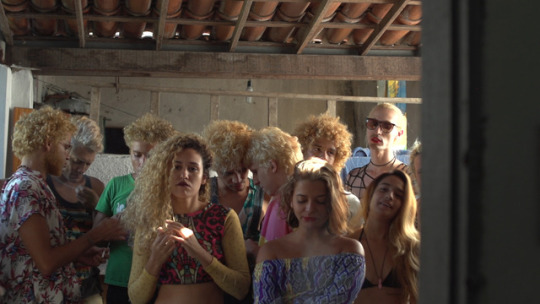
vulgo vando vedita (andréia pires & leonardo mouramateus, 2017)
@ 24.3.18
1 note
·
View note
Text
António's spell
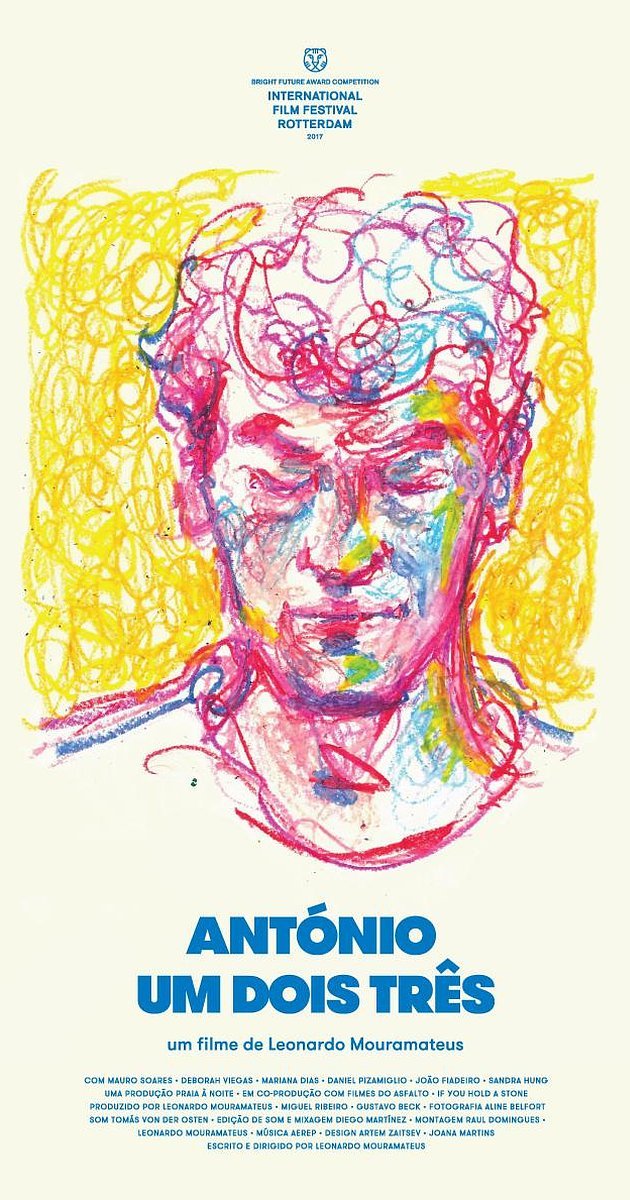
When Lola was running on the streets of Berlin in 1998, it was the cyber-excitement for interactive storytelling that repositioned her again and again on the starting point, up until the happy end. In the Lisbon-set ANTÓNIO ONE TWO THREE / ANTÓNIO UM DOIS TRÊS (2017) by Leonardo Mouramateus (part fairy tale of a self-made man, part millennials romance, part austerity challenge), the eponymous protagonist seems to run towards a three-act change. Our new contributor Andreea Pătru met in Rotterdam the director of this charming feature debut and his film star Mauro Soares in order to deconstruct António's agenda. Three, two, one – start!
Leonardo Mouramateus is a young film director, already known for several highly acclaimed shorts. His MAURO IN CAYENNE / MAURO EM CAIENA (2013) and THE PARTY AND THE BARKING / A FESTA E OS CÃES (2015) both won the Best Short Film prize at Cinéma du Réel, and STORY OF A FEATHER / HISTÓRIA DE UMA PENA (2015) screened at Locarno Film Festival. Born in Brazil, Fortaleza, he shot his first feature ANTÓNIO ONE TWO THREE / ANTÓNIO UM DOIS TRÊS (2017) in Lisbon, where he currently resides.
I had a chance to speak with Leonardo Mouramateus, and Mauro Soares, who played António, was kind enough to translate and participate in our conversation at IFFR, where the film premiered in the Bright Future Competition. Working with the possibilities of multiple representations of its protagonist, the director parted the film in three segments that delicately influence and interact with each other. In this triptych, not only the protagonist’s personality changes, the surroundings and his peers are also given slightly different roles. The film reaches its full potential as a whole because of the strengthened interrelation between its units, giving sense to isolated sequences that fit better into the bigger picture.
António is a student who leaves university to follow his own path in Lisbon, hiding away from his father at his ex-girlfriend’s apartment, a place where he has been the most happy. Leonardo Mouramateus’ film moves away from the conventional and classical narrative forms, and dares to approach a fresh and subversive type of plot. He controls very well the dramatic shifts in his stories by mastering a cinematic grammar of his own, a unique approach for a debut. The film depicts the youthful feelings and connects the constant evolution of its characters with the instability of the millennials’ world.
Andreea Pătru: In the description of your film, you state that the movie is inspired by Dostoevsky’s short story White Nights. To what extent did that work influence yours?
Leonardo Mouramateus: The movie is not directly an adaptation of the work, it is influenced as much as it is from the work of other authors like the poem of Nicanor Parra, Roberto Bolaño, a novelist that I really enjoy. I could talk about the influence of not only writers, but also from music or other pieces of cinema, like Charlot, because my protagonist is a little bit like him, and Lubitsch.
Maybe Dostoevsky gained a little bit more attention because in the movie the director chose to adapt it for his theatre play too… and also because it was very fit for the things we wanted to talk about – youth, dreams…
AP: The main character plays various roles, but the majority are related to theatre. Why theatre, what is your relation with this art?
LM: Before cinema, I made theatre in Fortaleza, so for me it was the starting point to get used to a certain type of language, to work with a group and collaborate. Also, a lot of the people, with whom I work now, are related to theatre. I liked it because you can also express with your body, make jokes, the mise-en-scène, even if you are poor. Moreover, the theatre exerts a power over the imagination that interests me in cinema, its limitations are tools to explore my creativity.
One of the most important things was my contact with João Fiadeiro, the actor who plays the father in the film. He is also a great choreographer, I got in touch with his system through one of his workshops, and I learnt about realtime composition. Even if it is not that strict of a method, it made me think of the self-sufficiency, of composition, and construction without the author as the master. Everybody, all the parts of the crew are important. Also, theatre appears in my film for its capacity of reconstruction and also because of its lively creativity, you can watch how ideas are born, and I also liked to illustrate the process.
AP: The three-part story you have chosen is an interesting tool for developing your plot. The stories merge into one another by repeating the characters, yet giving them different character development, to the point we do not know which story is the real one. Which was the first part you have developed?
LM: We shot the movie as it is presented, in the exact same order: one, two, three. After I shot the first part, we stopped for six months, and so on after each part. I do not know how would have looked if I changed the order, because I never experienced it. Maybe chronologically it wouldn’t be so visible, but the changes in the development of the character would be affected. There is something that changes and grows from the beginning to the end. For instance, in the first part we present the characters, in the second part there are other questions for António, and in the third one his issues from the previous parts are explored and get solved.
Mauro Soares: An observation, if I may: in a way, the character develops through the stories, since in the first one he has no perspectives whatsoever, then he goes from being a technician to the director of the theatre play.
LM: Yes, exactly. And somehow everything and nothing changes, because the only thing that changes is António. He crosses the three segments in an almost linear way, because we can assume he learnt something. He left school, but he knows enough to become a technician, and then because he lives in that basement and he is always there at the rehearsals, he also learnt something about acting, so that he can direct in the third part. So to me they are all linked in this way.
AP: Did any production limits restrict your intentions for António’s versions?
LM: Since I started making movies, the production and the writing were very well connected. To me the two come together and function together, they are not restricted to one another. To me, it is not important to put something crazy in the movie, like a whale or something. I am not attracted to far-away scientific experiences, I like to express what is important to me. I am attracted to words, funny little jokes, love stories, how people react when they are mad… and I have put that in my films.
AP: Talking about production and the formal structure of this story, how did the editing influence your previous intentions from the shooting?
LM: Since we had so much time in-between the shootings, we put the parts together so that we could follow the influences from the first part to the second one and so on. Even if sometimes things did not go as planned, one option was to change that, or even better, we thought of ways we could assume that and use those problems in our favor and put them in the film. Sometimes an error or an extra take were exactly what we needed. Because I could write after the previous part, I felt I can introduce something that did not feel well-fitted into the first one and make it work.
MS: For instance, I remember, when we were rehearsing, and we talked about the thing that António smiled when he ran away from his father, we thought the scene would be too heavy, and we did not want such drama. The intention was to have some youth to it, not like an inter-generational fight between father and son, so I proposed I could smile.
LM: Yeah, and I used this scene that otherwise looked intriguing as a discussion in the theatre group in the second part. These things inspire me, and I put them in the script accordingly. We were creating the film while it was creating us. I was an organically project that grew with us through the process.
AP: How would you describe the relation between reality and fiction for your own characters?
LM: There are no imaginary versions of António’s story, everything is reality. There is not one valid version and the other ones – dreams. The point is that, to me, the reality is not single-layered. Of course, maybe I can create an António four for five, but all these layers are as important to me as the first one. I intermingled António’s life with aspects from his play, because I had no desire to separate life from theatre. There is no lie or truth. To me, it is important to notice while watching it that everything is present.
MS: If there is a character that could be a little bit more aware of these different layers of reality, it is the neighbor, because she could cross all the stories. She is also passionate about tarot, maybe the cards can read the other dimensions, she can predict. [laughs]
LM: Yeah, because the same could be said about us as the creators of this film. There is also some kind of António plot that is also about us as filmmakers. The reality is composed through this metalinguistic declinations of the plot.
AP: Did you have in mind the same actor for all the three stories from the beginning?
LM: No. Firstly, because when I met Mauro I saw he has a tremendous talent in playing a variety of characters, and he was exactly what I needed, a comedy brunette guy. Another point is that there is only one António, even if he is present in three parts. It is the same character in different situations, reacting differently to the given environment and its changes. In some way, António is also a little bit like Johnnie, a guy who is heartbroken, and also Deborah in some way is like him, because she also left university. The most logical profile to me is that there is something of António in other characters, because he is not a single-sided character.
AP: Was it a challenge for you to re-direct these scenes in a different way?
LM: No, not actually. I had this idea of directing, and I knew some things would have to change from the first to the last part. But the things I wanted to change were very practical. Not only directing the actors, but also the mise-en-scène, the crew. For instance, in the first part António is more lonely, he does not interact that much, the relations are more closed. In the second part appears Johnny, that is like a mirror image of António, so I have to pull back the camera to fit these two people. The crew understood they have to mould, not only by my ideas but other factors, too. Aline Belfort, the photographer of the film, had to adapt too, because the parts were shot in different seasons, we started in winter, and the second part was shot in summer. She had to adapt to make all these changes in the way she was dealing with light, because of the materiality of what we were doing.
AP: How was for you the transition from short films to features?
LM: It came naturally, because my shorts were already lengthy, I have shot shorts of 30 minutes. In a way, you can think of my movie as a collection of three shorts, it is some kind of homage, although it is not a short film. Its rhythm, the approach is different. There is always this pressure for us, shorts filmmakers, when would we direct a feature. Like a grand transition should be expected. I was at this Mariano Llinás’ Anti-lab, and he was speaking exactly about young filmmakers that go through all sorts of workshops, mentoring, trainings, project development labs, and their scripts are destroyed by many experts. For me, it was important to start the project without this pressure and grow it organically.
AP: The iconic song I Put a Spell on You is a key diegetic piece in each of these parts of your film. Why did you choose to make the character sing it, and was its purpose within the work?
MS: Leonardo wanted to see me in the theatre, and he heard me sing a song from Jaques Brel – Ces Gens-Là. It was a very romantic moment, appropriate for the feeling of his film, so he wanted me to sing it in the movie. I did not want to repeat myself, since I was already working on the same piece for the play, so we chose Nina Simone’s I Put a Spell on You. [cover of Screamin' Jay Hawkins’ original]
LM: And also it was maybe the most important element to connect the parts. The song crosses over. It was not thought of before since I did not have the script for the second segment, yet it naturally stand out as an element to link. At our second screening here, a music teacher from Amsterdam came and said that to him the film has the structure of music. I liked this comparison, I do not create films with the structure of a song in mind, but I like to use the structure of a song to help me deliver my film. The electronic music that accompanies the images was also very specifically placed, the beat having to come in a specific moment and taking into account these details.
AP: Could you please expand a little about the relationship between Johnny and António? Is it symbolic, like putting Brazil and Portugal in comparison, since like the character, you also emigrated?
LM: Not really, but the Brazilians and the Portuguese will always have their differences. My personal experience inspired me to put this into film.
MS: It is interesting, because Johnny is also a Brazilian director who goes to Lisbon to direct his first big thing. He wanted somehow not to prove himself, but to produce something that is significant. He is his alter ego, in a way… [laughs]
AP: Yes, but to me, all the characters oscillate between Portugal and Brazil. They all seem to go or return from somewhere. António seems to be the only stable element, why did you choose that?
LM: I never thought about it that way, but António has no problems with going or staying in. It is Johnny’s and Deborah’s issue. That is not a question for António. He just wanted to be independent in Lisbon, living without his father’s support, without money, without even a home… in a way, he does an extreme gesture.
AP: You were commenting about his social condition and him not having money, and there are these screwball comedy elements in your movie. Do you feel that this style, which goes back to the Big Depression, is still actual to comment on the social conditions nowadays?
LM: The point of these comedies was not documentary, although it was meant to comment about the United States at that moment, and how money controls our lives and the way we think our relationships… Like in the comedies of Lubitsch, a comedy like NINOTCHKA (1939) is absolutely amazing and very actual. It is not only a satirical critique of communism but also comments on capitalism, and all of this while it is a dialogical film about love, love as a great principle, a political one also. I think that considering nowadays’ situation this is radical.
AP: Does the Portuguese or Brazilian cinema inspire you?
LM: I have always been moved by filmmakers like Eduardo Coutinho, or Pedro Costa, or Ernst Lubitsch, you know. Chaplin is also important to me. But before filming, we watched two important shorts. One was João César Monteiro’s WHO WAITS FOR THE DECEASED’S SHOES DIES BAREFOOT / QUEM ESPERA POR SAPATOS DE DEFUNTO MORRE DESCALÇO (1970), a film that also has a poor protagonist, wandering around in Lisbon, also heartbroken, like António… And it was also this other one about two guys who don’t have money to go to the cinema in Sao Paulo, so they do not enter, they just read the list of films, inspect the posters. I liked the feeling of these stories, it was very similar in a way with the plot that I was developing for ANTÓNIO ONE TWO THREE.
AP: I wanted to ask you if you have seen the films of Hong Sang-soo? He is also interested in these slightly different changes of plot. Do you want to pursue something as intransigent?
LM: Yes, I admire his work, and I think RIGHT NOW, WRONG THEN / JIGEUMEUN MATGO GEUTTAENEUN TEULLIDA (2015) is an amazing film, but there are other directors that followed this path also, like Alain Resnais. I think that my influences are more from the literature, that is why I have chosen an adaptation as an excuse to explore different narratives. I have heard Hong Sang-soo showed what he filmed to the actors. In a way I avoided that at the beginning, because I was a little bit skeptical about it, I did not want the actors to close the character’s development. But in a way it was good because everybody contributed to the story. Even the photographer, Aline Belfort, she is Brazilian, but she went to Russia to study photography, and she returned to Lisbon to shoot our film. So her personal story coincides with Deborah’s.
If you are a film industry professional, you can watch ANTÓNIO ONE TWO THREE on Festival Scope
#IFF Rotterdam#IFFR2017#Cinéma du Réel#Locarno FF#Pardo#Bright Future#Ibero-American cinema#Brazil#Lisbon#António One Two Three#Leonardo Mouramateus#Mauro Soares#Right Now Wrong Then#Hong Sang-soo#Nicanor Parra#Roberto Bolaño#Fyodor Dostoyevsky#Charlie Chaplin#Ernst Lubitsch#Aline Belfort#João Fiadeiro#Mariano Llinás#João César Monteiro#I Put a Spell on You#interview#Andreea Pătru
0 notes
Text
Sessão na Cinemateca Júnior por jovens programadores
Depois de 3 dias de oficina de programação na Cinemateca Júnior, orientada por Miguel Ribeiro, chegamos finalmente ao grande momento: a sessão programada pelos jovens participantes!
A sessão decorrerá no dia 23 de Abril, sábado, às 11h da manhã, na Cinemateca Júnior.
A entrada é livre e gratuita.
Contamos com a presença de Aline Belfort (Uma Carta Para o Meu Pai), João Nunes (O Quarto do Diogo) e Mauro Soares (Meio Ano-Luz).

Filmes
Meio Ano-Luz, de Leonardo Mouramateus
O Quarto do Diogo, de João Nunes
O Canto da Crisálida, de Francisco MeCe
Gargaú, de Bruno Ribeiro
Uma Carta Para o Meu Pai, de Aline Belfort
0 notes
Photo
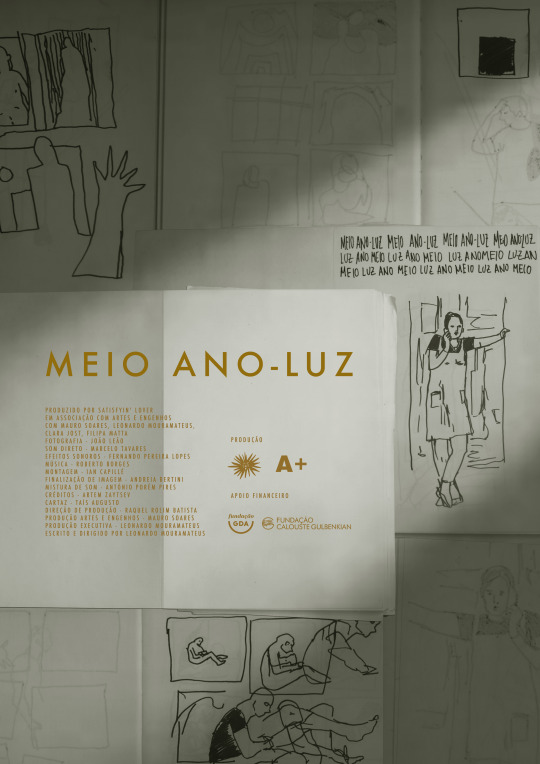
meio ano-luz (2021, curta-metragem, de leonardo mouramateus)
/ fotografias do caderno de desenhos do diretor e manipulação digital
0 notes
Text
I couldn't: António Um Dois Três (António One Two Three, dir. Leonardo Mouramateus, 2017)
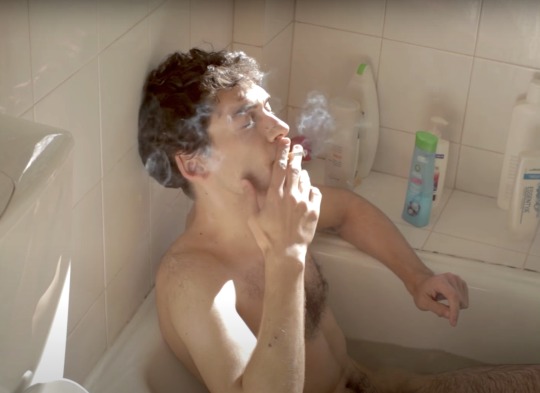
despite: there’s a disjunction between how I think of the film in retrospect (fondly) and how I feel while watching it (irritated), am curious to further explore the ambivalence
time managed: ca. 1h during three sittings
0 notes
Photo

Este sábado, no #FestivalVerãoSemCensura, a Spcine faz sessão de curtas LGBT com “Vando Vulgo Vedita”, de Leonardo Mouramateus e Andréia Pires, “Preciso dizer que te amo”, de Ariel Nobre, “Reforma”, de Fábio Leal, “Negrum 3”, de Diego Paulino e “Swinguerra”, de Bárbara Wagner e Benjamin de Burca: http://bit.ly/veraosemcensura
0 notes
Text
Cineclube de animação é o novo destaque do Cine Guarani

Os apaixonados por filmes de animação poderão aproveitar, a partir desta quinta-feira (29/8), a programação do mais novo cineclube que passa a fazer parte da programação fixa do Cine Guarani, localizado no Portão Cultural. O Frame a Frame: Cineclube de animação, projeto aprovado pelo Fundo Municipal da Cultura, vai apresentar filmes de diferentes técnicas e épocas sempre acompanhados de debates.
Para abrir a série o cineclube selecionou o longa-metragem “Homem-Aranha: No Aranhaverso”, vencedor do Oscar de animação 2019. O filme conta a história de Miles Morales, um jovem negro do Brooklyn, que após ser atingido por uma teia radioativa, se torna o Homem-Aranha, inspirado no legado do já falecido Peter Parker. A sessão começa às 19h e a entrada é franca.
O cineclube Frame a Frame é voltado à difusão do cinema de animação. As sessões serão realizadas duas ou três vezes ao mês, às quintas-feiras, sempre com um especialista convidado para comentar sobre os processos implementados na realização das animações.
Tradição
Os cineclubes são atrações tradicionais da programação do Cine Guarani e da Cinemateca de Curitiba. Ao todo são seis em funcionamento entre os dois espaços: O Cineclube da Aliança Francesa, o Cineclube do Centro Cultural da Espanha, Cineclube do Cinema Brasileiro, Cineclube do Atalante, Cine Rei e agora o Frame a Frame. Neste sábado o público pode aproveitar a programação de dois deles.
Na Cinemateca, continua a série de homenagens a nomes influentes da sétima arte com a mostra História(s) do Cinema, proposto pelo Cineclube do Atalante, projeto também aprovado pelo Fundo Municipal da Cultura. Depois de apresentar as obras dos irmãos Lumière e de Chaplin, o cineclube vai exibir neste sábado (31/8), às 16h o curta-metragem “Viagem à Lua”, de George Méliès – para muitos, considerado o primeiro filme de ficção científica – e as comédias “Uma Semana” e “Sherlock Jr”, dirigidas por um dos pilares do cinema mudo, Buster Keaton.
Já o Cineclube do Cinema Brasileiro apresenta no Cine Guarani, às 16h, o filme Temporada, do diretor André Novais Oliveira. O longa conta a história de Juliana (Grace Passô) que sai do interior para morar em Contagem, cidade da região metropolitana de Belo Horizonte (MG). Seu novo emprego, em que ela combate endemias da região, cria situações pouco usuais e apresenta a ela pessoas novas, que começam a mudar sua vida
Outras atrações
Além dos cineclubes, seguem em cartaz na Cinemateca os longas-metragens “António Um Dois Três”, na sessão das 16h, e “AYKA”, às 19h. Os dois filmes tiveram suas sessões prorrogadas até a próxima quarta-feira (4).
No Cine Guarani, acontecem até 1º de setembro, as últimas sessões dos filmes “Mal Nosso” (terror), às 19h, e “Maya”, às 16h. Na próxima terça-feira (3), será realizada a projeção do documentário sobre a 1ª Etapa do Pedal de Ferro 2019. A sessão acontece às 20h com entrada gratuita.
Os cinemas da Fundação Cultural de Curitiba funcionam de terça a domingo. Os ingressos custam R$10 (inteira) e R$5 (meia-entrada), na Cinemateca, e R$12 (inteira) e R$6 (meia-entrada), no Cine Guarani.
Confira abaixo a programação dos cinemas.
Serviço
Frame a Frame – Cineclube de Animação
Homem Aranha: no Aranhaverso (EUA, 2018, ação/aventura, 117')
Data: 29/8 (quinta-feira)
Horário: 19h
Classificação: Livre
Local: Cine Guarani, Portão Cultural (Avenida República Argentina, 3430 – Portão)
Entrada Franca
Cineclube do Atalante – Mostra História(s) do Cinema
Georges Mèliés E Buster Keaton
Data: 31/8 (sábado)
Horário: 16h
Classificação: Livre
Local: Cinemateca de Curitiba (Rua Presidente Carlos Cavalcanti, 1174 – São Francisco)
Entrada Franca
CINECLUBE DO CINEMA BRASILEIRO
Temporada (BR, 2018, drama/ficção, 113',)
Data: 31/8 (sábado)
Horário: 16h
Classificação: 12 anos
Local: Cine Guarani, Portão Cultural (Avenida República Argentina, 3430 – Portão)
Entrada Gratuita
Programação Cinemateca
Dia: até 4/9
16h – (exceto dia 31/8)
António Um Dois Três
(Portugal/Brasil, 2017, drama, 95’, 14 anos)
Direção: Leonardo Mouramateus
Elenco: Mauro Soares, Deborah Viegas, Mariana Dias.
19h
AYKA
(Rússia/Alemanha/Polônia/Cazaquistão/China, 2018, drama, 100’, 14 anos)
Direção: Sergey Dvortsevoye
Elenco: Samal Yeslyamova, Zhipara Abdilaeva, Sergey Mazur
Programação Cine Guarani
Até 1/9
16h (exceto dia 31/8)
Maya
(França, 2018, drama, 105', 12 anos)
Direção: Mia Hansen-Love
Elenco: Roman Kolinka, Aarshi Banerjee, Alex Descas
19h
Mal Nosso
(Brasil, 2019, terror, 93’, 16 anos)
Direção: Samuel Galli
Elenco: Ademir Esteves, Ricardo Casella, Antony Mello
3/9
1ª ETAPA DO PEDAL DE FERRO 2019
(BR, 2019, documentário esportivo, 30', livre)
Direção: José Guilherme da Silva
Horário: 20h
Entrada Franca
0 notes
Text
Programação
16 de agosto | Quarta-feira
Local: Centro Cultural Banco do Nordeste
16h
Povoamentos da terra
Andanças pelo Sertão: as cidades que a Comissão viu
Clóvis Jucá
O Ceará entre ciência e lenda: a Comissão Científica de 1859 e as lendas de ouro no Ceará
Paulo César dos Santos
A água e o tempo: o olhar de viajantes e cientistas no Ceará oitocentista
Kênia Rios
Comunidades tradicionais e povos indígenas: resistências ancestrais diante da histórica cobiça por seus territórios
Jeovah Meireles
19h ��
Intervenção conjunta: Clara Bastos, Coletivo Chá das Cinco, Danilo Carvalho, Érico Araújo Lima, Leonardo Mouramateus, Lívia de Paiva, Yuri Firmeza
17 de agosto | Quinta-feira
Local: Centro Cultural Banco do Nordeste
16h
Viajantes do tempo
Expedicionários e situados: notas em torno de artistas e ações em contexto
Clarissa Diniz
Curadorias da alteridade: problemas renovados
Jacqueline Medeiros
18h
Nas fendas da memória
A ruína na imagem, a imagem como ruína
Cláudia Mesquita
O espectro das ruínas
Tadeu Capistrano
18 de agosto | Sexta-feira
Local: Centro Cultural Banco do Nordeste
16h
Em volta da fogueira
Sobre o incontornável trabalho do real
Beatriz Furtado
Astronomias, cercas, placas delgadas e
como destruir a destruição?
Manoel Ricardo de Lima
18h
A cauda da noite
Tempo e Biopolítica
Peter Pál Pelbart
21h
Encerramento
Local: Salão das Ilusões
Lançamento de Livros da n-1 edições e de Manoel Ricardo de Lima
Performance do Coletivo Chá das Cinco
Festa de Encerramento
1 note
·
View note
Photo
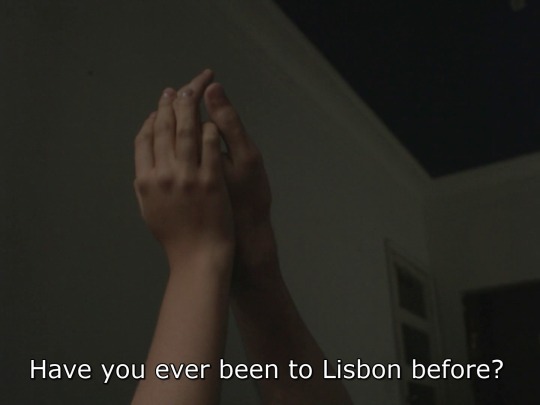



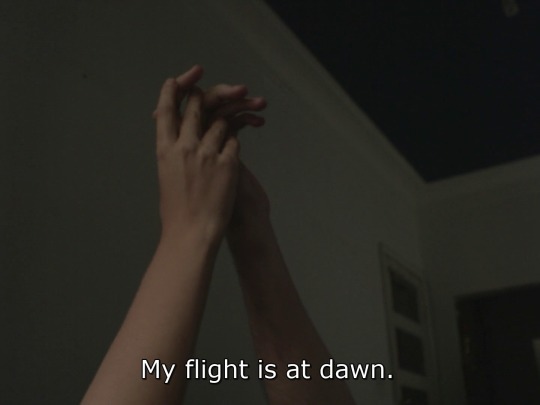
António Um Dois Três [Antonio one two three] (Leonardo Mouramateus - 2017)
#António Um Dois Três#Antonio one two three#2010s cinema#Leonardo Mouramateus#Mauro Soares#Deborah Viegas#Daniel Pizamiglio#João Fiadeiro#cinema of Portugal#Portuguese cinema#Portuguese movies#European movies#European cinema#European society#Lisboa#Lisbon#Lisbona
0 notes
Photo


ÇE VA EXPLOSER
Ça va exploser [Isto vai explodir] é a história de uma crise. A crise de um encontro. Com o outro, com nós mesmos, com o mundo. Na superfície tudo aparenta estar calmo… As palavras e os gestos acomodam-se no protocolo ficcional de uma relação e ocupam um espaço de intimidade construído. Os acontecimentos dão-se nas brechas dessa ficção.
Que ideias utilizamos para pensar com outras ideias? Falamos a mesma língua? São tempos confusos. As coisas colidem, sobrepõem-se, atropelam-se. Aqui e ali sincronizam, partilham um plano comum. Mas parece que só o fazem para poderem confirmar a impossibilidade de continuidade. A eminência da explosão.
O título Ça va exploser remete para uma das imagens do livro Ma vie va changer [A minha vida vai mudar], de Patrícia Almeida e David-Alexandre Guéniot, que serve como território de referência afetiva e estrutural para a construção deste trabalho.
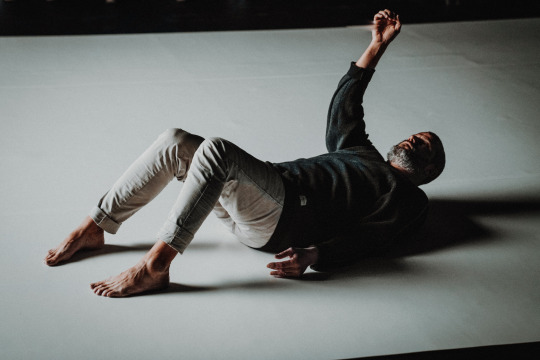

Criação e interpretação Carolina Campos e João Fiadeiro
Dramaturgia Leonardo Mouramateus
Desenho de Luz e Direção Técnica Leticia Skrycky
Composição Sonora Arnold Haberl
Assistente Artístico Daniel Pizamiglio
Produção executiva Marta Moreira
Coprodução Teatro do Bairro Alto, Teatro Viriato, Festival DDD
Apoio Fundação GDA
Agradecimentos Estúdios Vítor Cordon, Atelier Real, La Caldera, Carine Panigaz, Amelie Panigaz Borges, Filipe Mello, Federal Chancellery of Austria
Fotos promocionais Ana Viotti

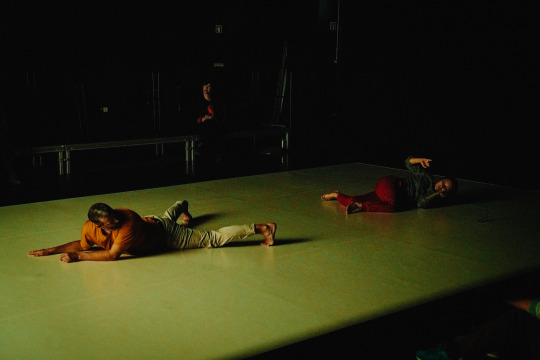
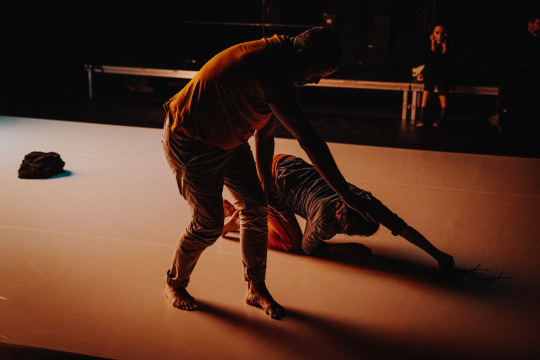
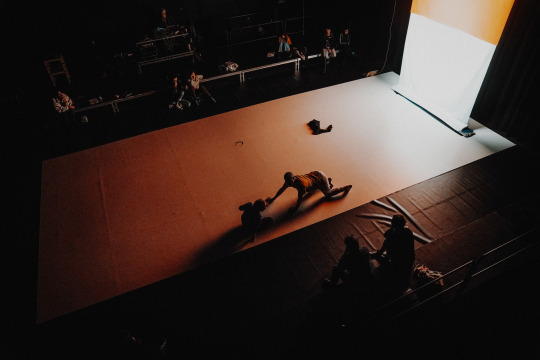
Carolina Campos e João Fiadeiro colaboram desde 2012 entre projetos de criação, formação e investigação. Carolina é brasileira e vive entre Lisboa e Barcelona. Foi bailarina da Lia Rodrigues Cia de Danças até 2011 e destaca no seu percurso colaborações com Márcia Lança, Adaline Anobile, Iván Haidar e Julián Pacomio.
João é português e vive em Lisboa. Foi diretor artístico do Atelier | RE.AL (1990-2019). O seu trabalho enquanto coreógrafo, investigador e professor gravita em torno do sistema Composição em Tempo Real, uma ferramenta teórico-prática de apoio à composição, colaboração e decisão.
youtube


0 notes
Text
‘Antonio One Two Three’: A Mischievously Meta Meander Through A Lisbon Love Story [Crossing Europe Review]
Angels might fear to tread on territory such as this — Dostoevsky’s short story “White Nights” has previously formed the inspiration for films from Luschino Visconti, Robert Bresson, and James Gray, among others. But then prolific Brazilian shorts director Leonardo Mouramateus is either no angel, or a particularly fearless one, because his feature debut “Antonio One Two Three” with gleeful mischief, plunges both hands elbow-deep into Dostoevsky’s tale of triangular, unrequited love, and teases and stretches and taffy-pulls it into something new.
Continue reading ‘Antonio One Two Three’: A Mischievously Meta Meander Through A Lisbon Love Story [Crossing Europe Review] at The Playlist.
want watch movies online
from The Playlist https://ift.tt/2K8Mcig
by via watch movies online via IFTTT
0 notes
Text
CINEMA I Estreias: Dumbo, Gloria Bell, Happy Hour - Verdades e Consequências, Vox Lux - O Preço da Fama, A Rebelião, Inezita
CINEMA I Estreias: Dumbo, Gloria Bell, Happy Hour – Verdades e Consequências, Vox Lux – O Preço da Fama, A Rebelião, Inezita
Versão de Tim Burton para ‘Dumbo’ e Natalie Portman como estrela pop estão entre estreias
Gloria Bell. Direção: Sebastián Lelio. Com: Julianne Moore, Alanna Ubach e Michael Cera. 102 min. 16 anos.
António Um Dois Três
Brasil/Portugal, 2017. Direção: Leonardo Mouramateus. Com: Mauro Soares, Deborah Viegas e Mariana Dias. 95 min. 14 anos.
Quando o pai descobre que ele não frequenta mais a…
View On WordPress
0 notes
Video
vimeo
Lagoa Remix
Leonardo Mouramateus, 2014.
0 notes
